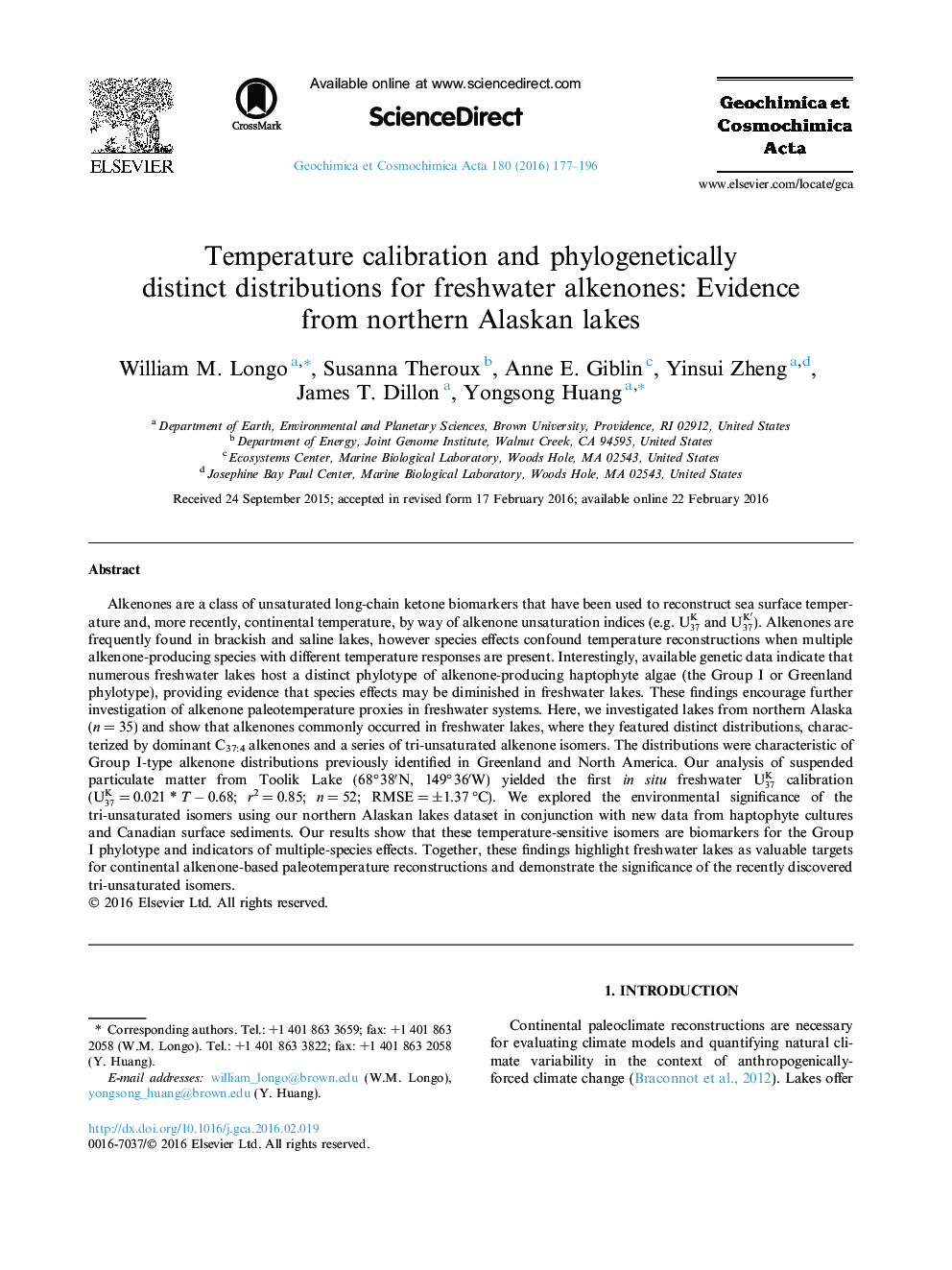| Article ID | Journal | Published Year | Pages | File Type |
|---|---|---|---|---|
| 6437413 | Geochimica et Cosmochimica Acta | 2016 | 20 Pages |
â¢Freshwater U37K temperature calibration from northern Alaska.â¢Environmental controls on freshwater alkenones.â¢Tri-unsaturated alkenone isomers as chemotaxonomic biomarkers for Group I haptophytes.â¢RIK37 - a new index to assess species effects on alkenone temperature reconstructions.
Alkenones are a class of unsaturated long-chain ketone biomarkers that have been used to reconstruct sea surface temperature and, more recently, continental temperature, by way of alkenone unsaturation indices (e.g. U37K and U37Kâ²). Alkenones are frequently found in brackish and saline lakes, however species effects confound temperature reconstructions when multiple alkenone-producing species with different temperature responses are present. Interestingly, available genetic data indicate that numerous freshwater lakes host a distinct phylotype of alkenone-producing haptophyte algae (the Group I or Greenland phylotype), providing evidence that species effects may be diminished in freshwater lakes. These findings encourage further investigation of alkenone paleotemperature proxies in freshwater systems. Here, we investigated lakes from northern Alaska (n = 35) and show that alkenones commonly occurred in freshwater lakes, where they featured distinct distributions, characterized by dominant C37:4 alkenones and a series of tri-unsaturated alkenone isomers. The distributions were characteristic of Group I-type alkenone distributions previously identified in Greenland and North America. Our analysis of suspended particulate matter from Toolik Lake (68° 38â²N, 149° 36â²W) yielded the first in situ freshwater U37K calibration (U37K = 0.021 * T â 0.68; r2 = 0.85; n = 52; RMSE = ±1.37 °C). We explored the environmental significance of the tri-unsaturated isomers using our northern Alaskan lakes dataset in conjunction with new data from haptophyte cultures and Canadian surface sediments. Our results show that these temperature-sensitive isomers are biomarkers for the Group I phylotype and indicators of multiple-species effects. Together, these findings highlight freshwater lakes as valuable targets for continental alkenone-based paleotemperature reconstructions and demonstrate the significance of the recently discovered tri-unsaturated isomers.
